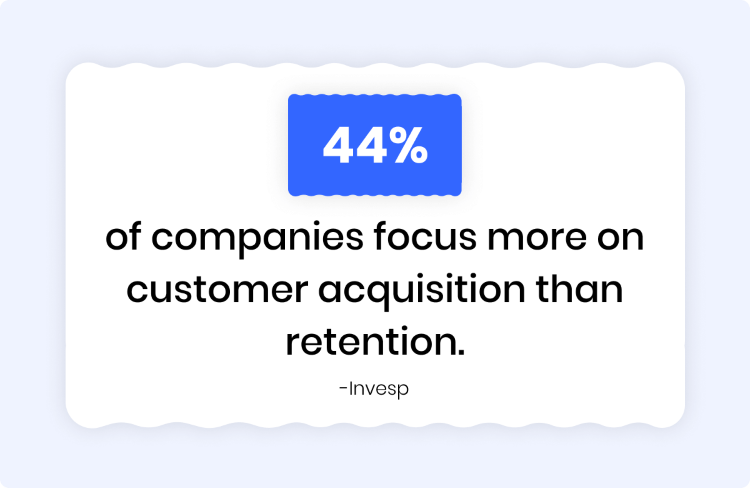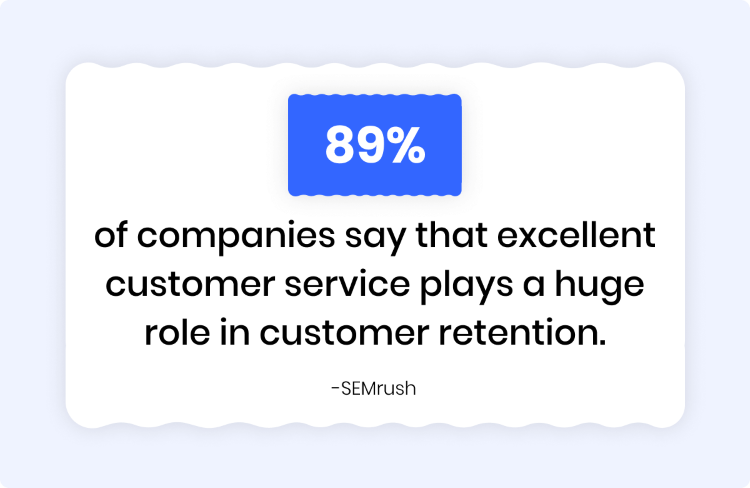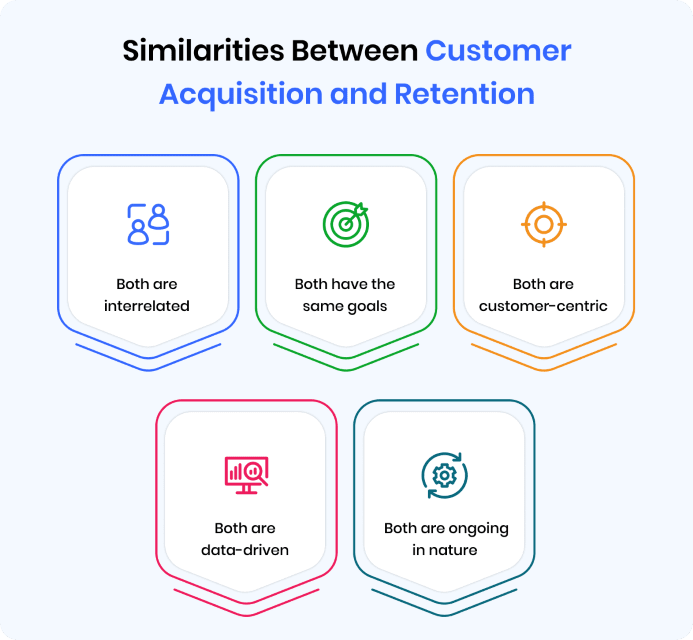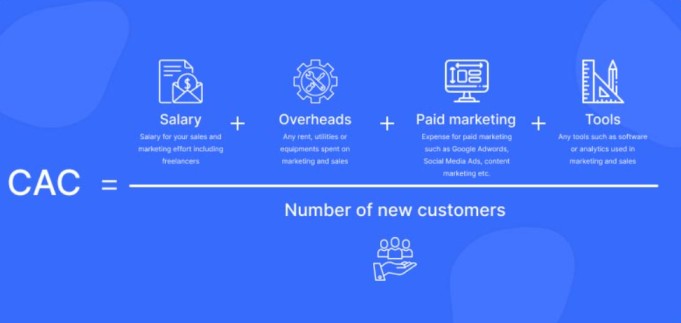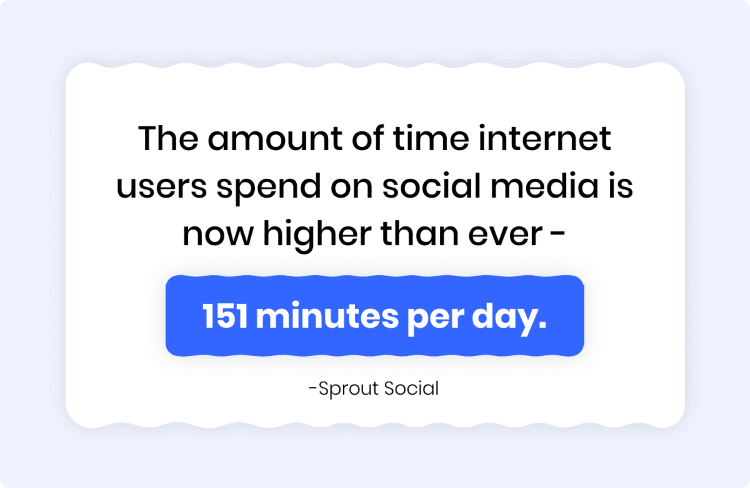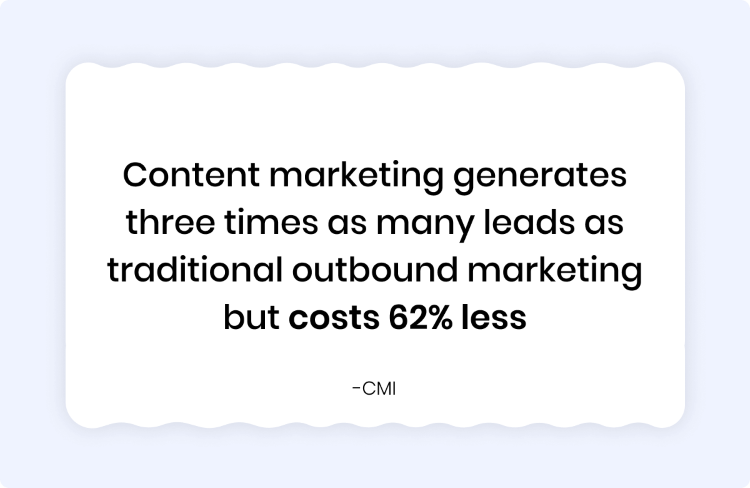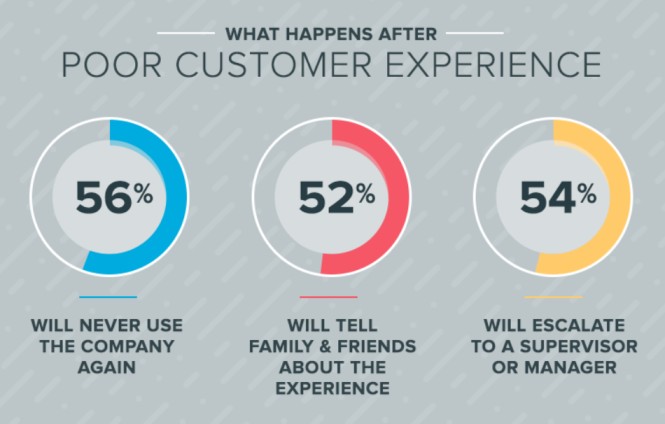Acquiring new customers is as critical to the growth of a business as retaining existing ones. Both acquisition and retention are vital strategies for achieving sustained growth and realizing the true potential of the business. While the focus of acquisition is to get new customers for the business, retention is about engaging the existing customers and keeping them happy.
A business can expand and increase revenue and profitability only when it gets its acquisition and retention strategies right. Not maintaining a balance between acquisition and retention might lead to losing customers in the long run.
Obviously, the right approach is to strike a balance between customer acquisition and retention to build a sustainable business. If a company prioritizes one above the other, it might have to face missed opportunities, resulting in a high churn rate, lack of repeat business, and so on.
In this blog, we will explore the many similarities and differences between acquisition and retention, and also discuss the popular strategies from both ends.
What is Customer Acquisition?
The primary goal of customer acquisition is to get new customers. It’s the process of attracting and converting new customers by using various marketing strategies and tactics. For acquiring new customers, most businesses use a mix of communication and targeted messages and make people interested in a product or service.
Key steps involved with customer acquisition:
- Identifying the target audience is often the first step in a customer acquisition strategy with a focus to understand their demographics and pain points.
- Engaging with the target audience and generating leads is another critical element of a successful acquisition strategy.
- Qualifying and nurturing leads is also a key aspect of the customer acquisition process where the focus is to use targeted marketing campaigns on those more likely to convert.
- Converting leads into paying customers and then ensuring a smooth buying experience is the ultimate target of customer acquisition.
- Measuring and optimizing the acquisition efforts is the last step of the acquisition process.
What is Customer Retention?
Customer retention is everything a business to keep existing customers engaged and satisfied. It’s the process of nurturing the relationship with existing customers and building trust. It involves a range of strategies and tactics aimed at encouraging customers to continue using the product or service of the business.
Key elements of a successful customer retention strategy are:
- Providing excellent service and ensuring value at each stage of the journey is the pillar of retaining customers.
- Engaging existing customers with personalized messages and a tailored approach is a vital element in boosting the chances of retention.
- Effective communication with customers at different stages of the journey is important to retain them.
- Rewarding and incentivizing existing customers is vital to forging loyalty and encouraging repeat purchases.
- Collecting customer feedback and working on it to improve products and service is an essential aspect of customer retention.
Customer Acquisition vs Retention: Where Are They Different?
Retention and acquisition are two essential aspects of a company’s overall customer-centric strategy. Both play a key role in helping a business win and retain customers and achieve long-term success. There are many similarities in the way both approaches work but at a deep level, some differences exist as well.
Key differences between a customer retention and acquisition strategy include –
- An acquisition strategy is mainly concerned with reaching out to the target audience and convincing potential customers to show interest in the company’s products or services. On the other hand, the focus of retention is to build and strengthen relationships with existing customers so that they can continue to stick with the business and show loyalty.
- Acquiring new customers requires marketing efforts which makes it more expensive than retention. In contrast, retention needs targeted marketing to establish a relationship with existing customers which makes it less costly compared to acquisition.
- Customer acquisition is a short-term approach where the goal is to win new customers in a specific time frame. However, retention is a long-term strategy that involves sustained effort over a period of time.
- Businesses need to use a proactive approach to acquire new customers while they need a more reactive approach to achieve retention.
- You have to look into customer acquisition cost and lifetime value. Your CAC should not be higher than the lifetime value of your customers. Some of the common metrics for customer acquisition include cost per acquisition (CPA) and conversion rate.
- While marketing is the key tactic of customer acquisition, it’s personalization that works as the main method for retention.
Customer Retention vs Acquisition: Where Are They Similar?
While customer retention and acquisition are different in focus and approach, they also carry a lot of similarities in the way businesses leverage them. It’s therefore important to know where both these concepts are similar to better utilize their virtues.
Some of the ways in which acquisition and retention are similar include:
- Both strategies focus on helping businesses enhance the customer experience with the product, service, or process, either while attracting new customers or retaining the existing ones.
- In both, the primary aim is to gain customer loyalty or build trust, either on an immediate basis through marketing efforts or over a period of time with sustained effort.
- Building relationships with customers is the cornerstone of acquisition as well as retention strategies. With the acquisition, the relationship is forged with new customers while the bond is strengthened with existing customers in retention.
- Effective communication is always at the root of a successful customer acquisition and retention approach. In acquisition, marketing messages are the key mode of communication while personalized support is the main form of communication in retention.
- Both strategies involve the use of data analysis to measure the effectiveness and success of the efforts. In acquisition, marketing campaign data is analyzed while customer experience data is measured in acquisition.
- Keeping customers happy and satisfied is the main theme that forms the crux of both strategies. While making a positive first impression on customers is the primary goal of acquisition, keeping customers delighted with good service is the major task in retention.
Customer Acquisition vs Retention Costs
Acquiring and retaining customers is the key component of a successful business strategy. Both require continuous effort and also involve costs. To calculate the costs, a business needs to track and analyze various metrics for a specific period which can help in making informed decisions about customer retention and acquisition strategies.
The following formula can help in calculating customer acquisition costs (CAC):
CAC = Total Acquisition Costs / Number of New Customers Acquired
The above formula will provide the average cost of customer acquisition for a new customer in a specific period. To understand the total acquisition costs, it’s important to include all the expenses including marketing and sales, that were incurred in getting new customers into the business.
The following formula will help in calculating customer retention costs (CRC):
CRC = Total Retention Costs / Number of Retained Customers
The above formula will provide the average cost of retaining one customer during a specific period. The total retention costs will include all the costs incurred in retaining the customers including customer service costs and other related expenses.
Popular Customer Acquisition Strategies
Acquiring new customers requires a well-planned strategy and consistent effort. Every business should first understand the target audience and their preferences before adopting those strategies for winning customers.
Some popular customer acquisition strategies include:
Paid Advertising
Paid marketing is not only a common type of customer acquisition strategy but also very effective as well. It helps businesses reach a bigger audience and cater to a specific demographic by paying for ad spaces on various channels.
Search Engine Marketing (SEM), Social Media Advertising, Display Advertising, and Native Advertising are four key elements of a paid advertising strategy adopted by many businesses.
Referral Programs
Happy customers often refer the brands to others. They are brand loyalists and brand advocates and can contribute to bringing in more customers. However, it’s important to incentivize existing customers and give them a reason to refer your brand to friends and family. It’s a good strategy to offer rewards and discounts to existing customers so that they can help your business attract new customers at a lower cost compared to paid marketing.
Content Marketing
Creating high-quality content and distributing it through various channels can be an effective customer acquisition strategy. The purpose of creating content is to add value, be it by sharing useful information or by providing updates.
With different types of content such as blog posts, infographics, and videos, it’s easy to engage customers and catch their attention. More importantly, content marketing can play a key role in establishing the business as the industry leader.
Email Marketing
Email marketing is an effective customer acquisition strategy that helps businesses communicate directly with potential customers and start engagement. Using emails, it’s possible to deliver personalized messages in tune with the interests and behaviors of customers. In addition, this form of marketing also helps in creating targeted campaigns that align with the demographics, interests, and location of the audience.
More importantly, 81% of businesses ( small-sized) still rely on email as their primary customer acquisition channel. The best thing about email marketing is its cost-effectiveness compared to other forms of advertising. Plus, it offers measurable results as well.
Popular Customer Retention Strategies
While retaining customers is cheaper than acquiring them, it nonetheless also involves effort on a continuous basis. There are some really helpful strategies that businesses can adopt and retain existing customers.
Some popular customer retention strategies are –
Customer service
Providing excellent customer service is often the key to retaining existing customers. In fact, 83% of customers agree that they show more loyalty to brands that respond to and resolve their complaints.
There is no doubt that businesses that offer improved service are more likely to retain customers compared to others. When customer service is great, it ensures a boost to customer experience, resulting in happy and satisfied customers.
Personalized communication
Customers always want to feel valued and respected and a touch of personalization in communication can help achieve that target. The purpose of personalization is to cater to the exact needs and preferences of customers and also make them feel special through the various stages of the journey.
Loyalty programs
Proper use of loyalty programs can help encourage customers to make repeat purchases and enhance their loyalty to the brand. They work as an incentive for customers to maintain their relationship with the business. By offering exclusive offers and other benefits, it’s possible to create a sense of loyalty among customers.
Customer feedback
Collecting customer feedback is a key retention strategy that any business can employ and benefit from it. The purpose of feedback is to improve products and services so that the customer’s overall satisfaction with the brand can increase. More importantly, gathering feedback gives customers a sense of being heard and valued.
Up-selling and cross-selling
Upselling and cross-selling are two key strategies that companies often adopt to boost the rate of customer retention. Both contribute greatly to building a stronger relationship with customers by offering additional value and showing a commitment toward their needs. They can also help increase average order value by encouraging customers to buy more often. With upselling, customers are offered a more expensive version of a product with additional benefits. In cross-selling, the focus is to complement the existing purchases of customers with offers of additional items.
Boost Your Customer Acquisition and Retention with the REVE Platform
Acquiring new customers and retaining existing ones are tasks that require careful planning and a well-defined strategy. More importantly, businesses need the right technology and tools to serve and delight customers.
With REVE Chat, your business can get a whole range of customer engagement tools that can contribute hugely to service and support. AI-powered chatbots can help speed up responses and automate various processes of support.
There are visual engagement tools as well such as video chat and co-browsing software that can make customer help a truly effortless task. Using these tools, a business can visually guide customers through the problems and towards solutions.
There is live chat software for offering quick responses to customers and boosting the response time. Live chat can be paired with the bot to ensure the best hybrid support for customers.
Final Thoughts
Acquiring and retaining customers in the age of chatbots should not be a challenging task if a business is ready to benefit from the power of technology. Using platforms like REVE Chat can prove very helpful in your business’ attempt to serve customers and engage them better.
You can sign up and check out some top-class customer support and service tools for your business.

